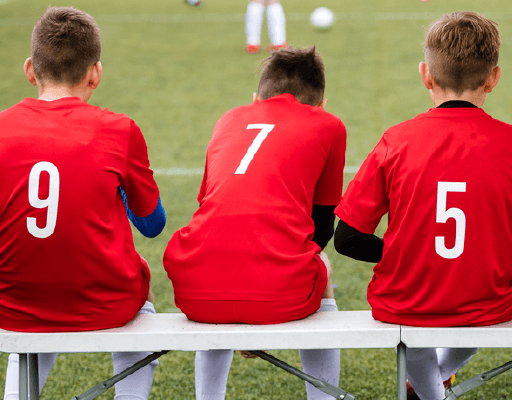Dealing With Concussion
Course Modules
Start Course
| Module 1 | Module 1 |
| Unit 1 | Welcome |
| Unit 2 | What Makes a Good Coaching Assistant? |
| Unit 3 | Communicating Effectively |
| Unit 4 | Athlete Centered Coaching |
| Unit 5 | Divisioning and Advancement |
| Unit 6 | Unified Sports |
| Unit 7 | What Makes a Good Training Session? |
| Unit 8 | The Ca's Role in Developing Fitness |
| Unit 9 | Dealing With Concussion |
| Unit 10 | The Adm and Associated S.o. Programmes |
| Unit 11 | Assessment |
| Unit 12 | Sport: Level 2 Coaching Assistant Course Evaluation Survey |
Powered By WP Courseware
Module Summary
Signs and symptoms
There are a number of tell-tale signs that you may observe and symptoms that an athlete may report when they experience a concussion, so it’s important to know what to look out for.

Signs
You may notice the athlete...
- seems dazed or stunned
- forgets an instruction
- seems confused or unsure of the game, score, or opponent
- moves clumsily
- answers questions slowly
- loses consciousness (even briefly)
- shows mood, behaviour, or personality changes
- can’t recall events prior to or after a hit or fall.

Symptoms
The athlete may report...
- a headache or “pressure” in the head
- nausea or vomiting
- balance problems, dizziness, double/blurry vision.
- being bothered by light or noise
- feeling sluggish, hazy, foggy, or groggy
- confusion, concentration or memory problems
- “not feeling right” or “feeling down”.
Danger signs
Although the signs and symptoms mentioned previously are indicative of a concussion, if you observe any of the following in an athlete, you should call the emergency services immediately, as they are strongly linked to a more serious head injury and life threatening hematoma.

- One pupil larger than the other.
- Drowsiness or inability to wake up.
- A headache that gets worse and doesn’t go away.
- Slurred speech, weakness, numbness, or decreased coordination.
- Repeated vomiting or nausea, convulsions or seizures (shaking or twitching).
- Unusual behaviour, increased confusion, restlessness, or agitation.
- Loss of consciousness (passed out/knocked out). Even a brief loss of consciousness should be taken seriously.
What should I do if a concussion is suspected?
No matter if the player is a key member of the team at a vital moment in the competition or if the game is about to end, an athlete with a suspected concussion should be immediately removed from play.
If you suspect a concussion, just follow these four simple steps:
Return to Play protocol
Special Olympics recommends that coaches use the United States Centre for Disease Control (CDC) Return to Play procotol. This advises that an athlete should only return to sports practices under the supervision of an appropriate health care professional. When available, be sure to work closely with your team’s certified athletic trainer.
Below are five gradual steps that you and the health care professional should follow to help safely return an athlete to play. Remember, this is a gradual process. These steps should not be completed in one day, but instead over days, weeks, or months. Athletes should only progress to the next level of exertion if they do not have any symptoms at the current step.
Click or tap each heading from the list below to find out more.
Begin with light aerobic exercise - only to increase an athlete’s heart
rate. This means about 5 to 10 minutes on an exercise bike, walking, or
light jogging. No weight lifting at this point.
Continue with activities to increase an athlete’s heart rate with body
or head movement. This includes moderate jogging, brief running,
moderate-intensity stationary biking, moderate-intensity weightlifting
(reduced time and/or reduced weight from your typical routine).
Add heavy non-contact physical activity, such as sprinting/running,
high-intensity stationary biking, regular weightlifting routine or
non-contact sport-specific drills (in three planes of movement).
Athlete may return to practice and full contact (if appropriate for the
sport) in controlled practice.
Athlete may return to competition. If an athlete’s symptoms come back,
or they get new symptoms when becoming more active at any step, this is
a sign that the athlete is pushing them self too hard. The athlete
should stop these activities and their health care provider should be
contacted. After more rest and no concussion symptoms, the athlete
should begin at the previous step.



